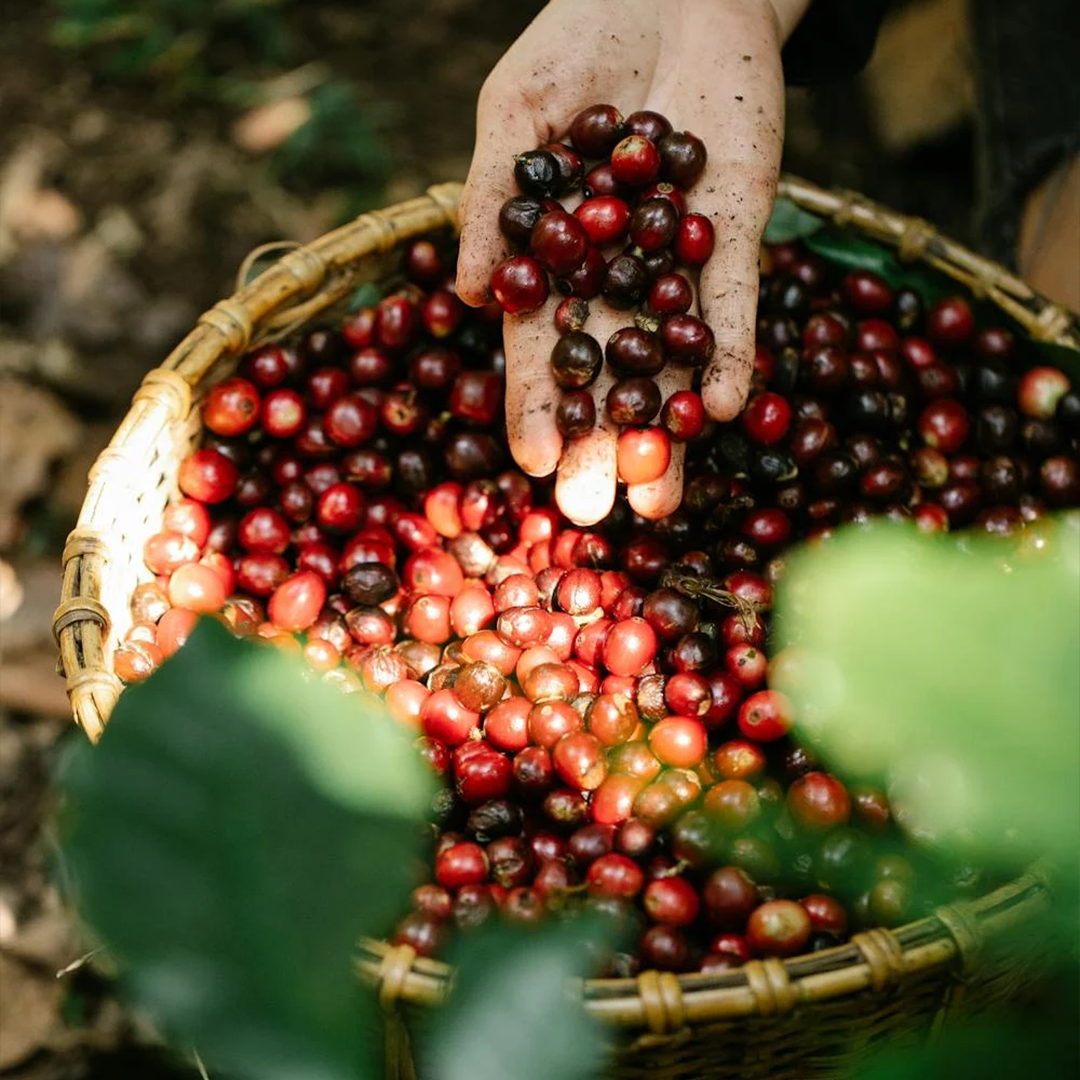A curious story of language, trade and a misnamed little seed.
We say “coffee bean” without thinking twice. But have you ever wondered… why call it a bean when it’s a seed?
Technically, coffee is the seed of a fruit, a cherry-like drupe. Botanically, it’s not a bean at all. Yet in cafes, coffee farms, trade contracts and Instagram captions, we all still call it a bean. So how did that happen?
Let’s unpack the history.

1. It started with the Arabic word ‘bunn’
Coffee’s first real home wasn’t a cafe. It was Yemen. By the 1400s, coffee was being cultivated and consumed there and locals referred to the plant and its seeds as bunn (بُن) [1]. That word likely came from Ethiopian bunna, still used in Ethiopia today for both coffee and the drink.
The drink itself was called qahwa (قهوة), which literally meant “wine”. So the term qahwat al-bunn meant “wine of the bean” [2]. That poetic phrase suggests something important: even in Arabic, coffee was tied to the idea of a “bean” right from the beginning, even if it was really a seed.
When European traders arrived in Yemen in the 16th and 17th centuries, they heard bunn and saw something that looked a lot like the beans they knew.
Now here’s an interesting linguistic tangent: while bunn and bean sound similar, their relation is debated. The prevailing wisdom is that the English word bean comes from old Germanic roots: bēan in Old English, boon in Dutch, Bohne in German and predates the arrival of coffee in Europe. So English didn’t borrow the word “bean” from Arabic, even though both words were used to describe the same seed. On the other hand, the word cafe traces back to qahwa, passing through Turkish (kahve) and French (Café) before entering English.

2. It looked like a bean, so they called it one
Let’s be honest: language is often driven by appearance, not biology.
When roasted, coffee seeds resemble familiar beans like kidney beans. They’re oval, brown and have that characteristic crease down the middle. Early traders didn’t need a botanical lecture. They needed words that made sense to the market.
So the term “coffee bean” likely took hold because it was simply the easiest way to describe it. Think of it like this: if you’ve never seen coffee before and someone hands you a brown, oval-shaped seed with a split down the centre, you’d probably call it a bean too.
Most historians and coffee experts agree. The visual resemblance theory is widely accepted as a core reason the name stuck [3,4].
Even William Ukers, in his 1922 book All About Coffee, noted that the use of “bean” was more a practical habit than a scientific truth [5].
3. Early Europeans called it seeds (then switched)
In the very early days of European coffee writing, people used terms like “seeds” or “berries”. A British traveller in 1601 described coffee as “a certaine liquor… made of a seede much like mustard seede” [6]. In 1624, Francis Bacon called it “a berry of the same name… as black as soot” [7].
-v1743746152057.png)
But by the late 1600s, something shifted. The first recorded use of the term “coffee bean” in English appears around 1688 [8]. As coffee became a traded commodity, handled like other dried goods, it was easier to market it like familiar legumes.
The Dutch, Europe’s leading coffee traders at the time, used the word koffieboon (coffee bean) and the term travelled across languages. By 1700, the phrase was common in English.
It was a linguistic shortcut that became a global habit.
4. Botanists weren’t thrilled, but no one cared
Scientifically, coffee is a seed, not a bean. It’s the pit of a fruit. True beans come from legumes like peas, lentils, soybeans. Coffee comes from a completely different plant family: Rubiaceae.
Botanists knew this early on. But the term “bean” was so widespread in trade and daily use that no one changed it. Even today, plant growers and agronomists refer to coffee seeds when discussing cultivation, while roasters and baristas still call them beans [9].
It’s a classic case of technical language losing out to common speech.
-v1743746104743.png)
5. Not every language calls it a “bean”
Interestingly, not all languages followed suit.
Spanish: grano de cafe (coffee grain)
French: grain de cafe (grain of coffee)
Italian: chicco di caffe (coffee kernel)
Portuguese: grão de cafe
Russian: kofeynoe zerno (coffee grain)
Arabic: bunn (still in use for green coffee)
Most non-English and non-Germanic languages call coffee a grain or seed, terms that more accurately reflect what it is. English and German just happened to settle on “bean” early, and that word stuck in popular culture and commerce [10].
Even in Mandarin and Japanese, the term now translates literally to “coffee bean”, a borrowing from Western terminology.
-v1743746055615.png)
So… what’s the real reason we call them beans?
It’s both. A little bit of history. A little bit of habit. A little bit of “it just looks like a bean”.
The early Arabic name bunn framed the way people thought about coffee from the start. European traders and writers cemented the term by analogy. And once it entered trade, menus and cafe conversations, it was never going back.
So yes, coffee beans aren’t technically beans.
But language, like coffee, is more about culture than chemistry.
Whether, it’s called beans or seeds, the important thing is how it tastes. And it should taste delicious. As life is too short for bad coffee.
Sources
- Al-Razi (10th c.), via Allen, S. “Yemen’s Well-Traveled Bean,” Saudi Aramco World, 1997
- Etymology of qahwa and qahwat al-bunn: Dictionary.com
- Ukers, William H. All About Coffee (1922)
- Tamana Coffee Blog, “The Misnomer of Coffee Beans”
- Coffeeworks Blog, “Coffee Beans – Where Do They Come From?”
- English traveller description, 1601 (cited in Ukers, 1922)
- Francis Bacon, Sylva Sylvarum, 1624
- Merriam-Webster Dictionary, First recorded use of “coffee bean” in English (1688)
- Botanical reference: Coffee cherry drupe classification, Coffea Arabica, Rubiaceae family
- Cross-linguistic comparison: Tamana Blog, Wikipedia (coffee in various languages)



